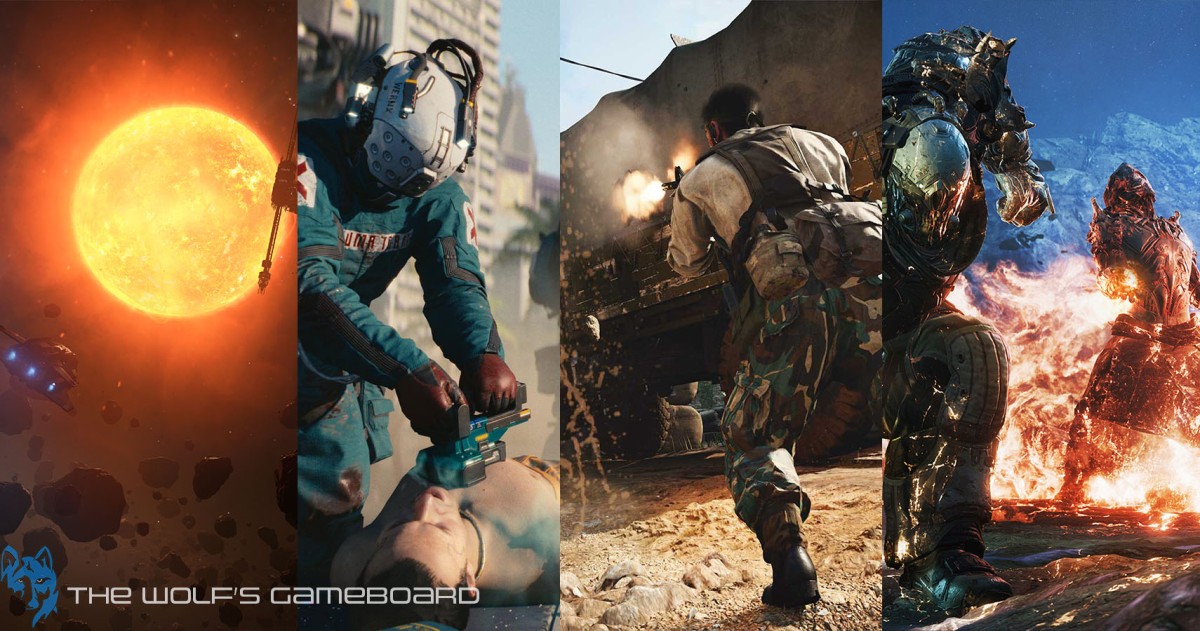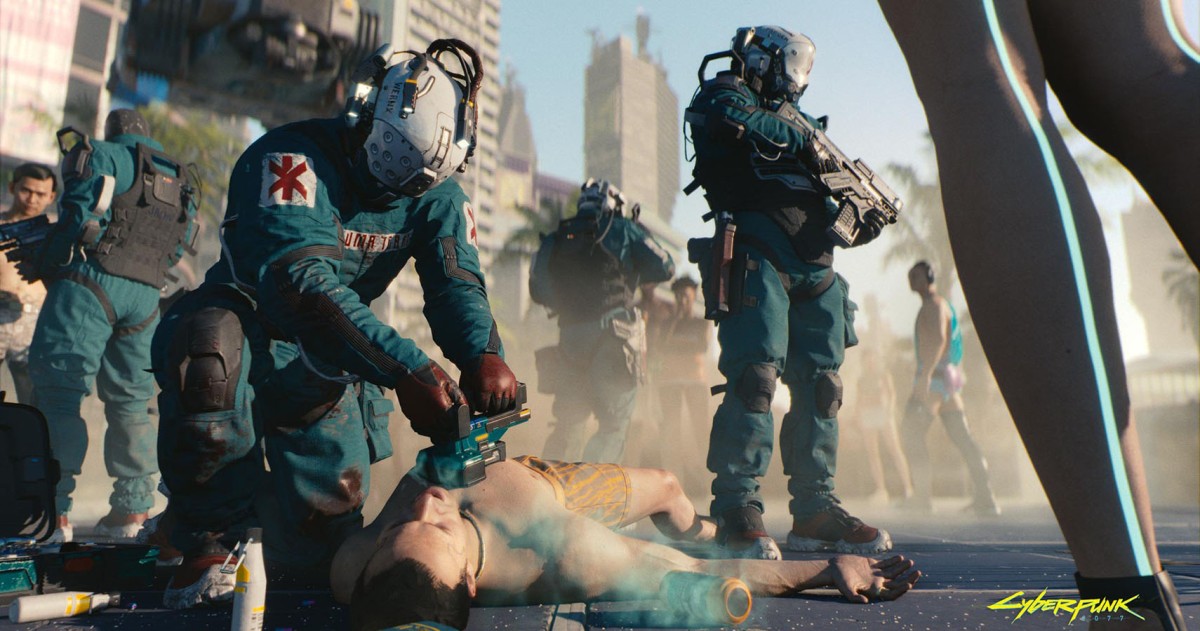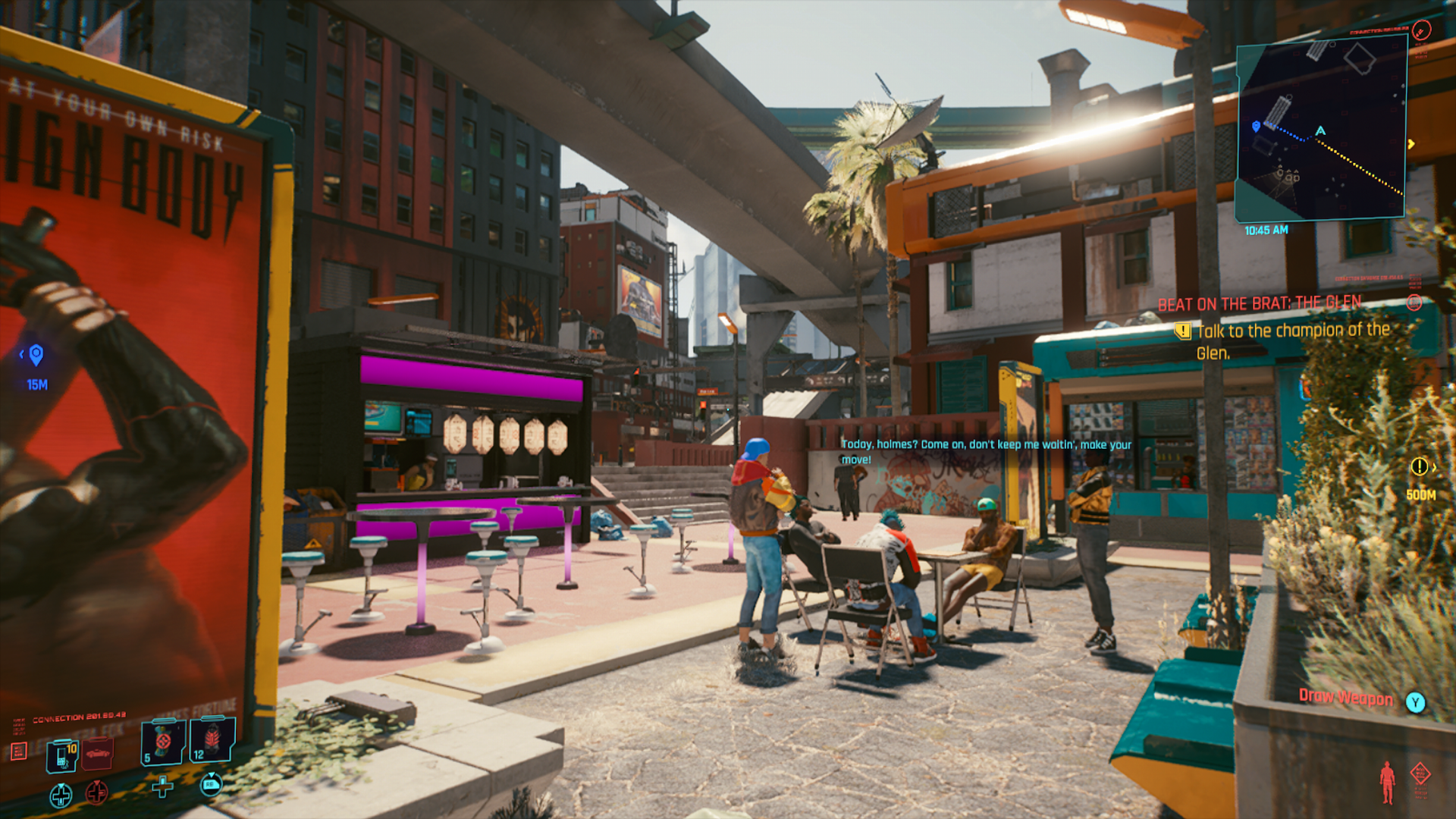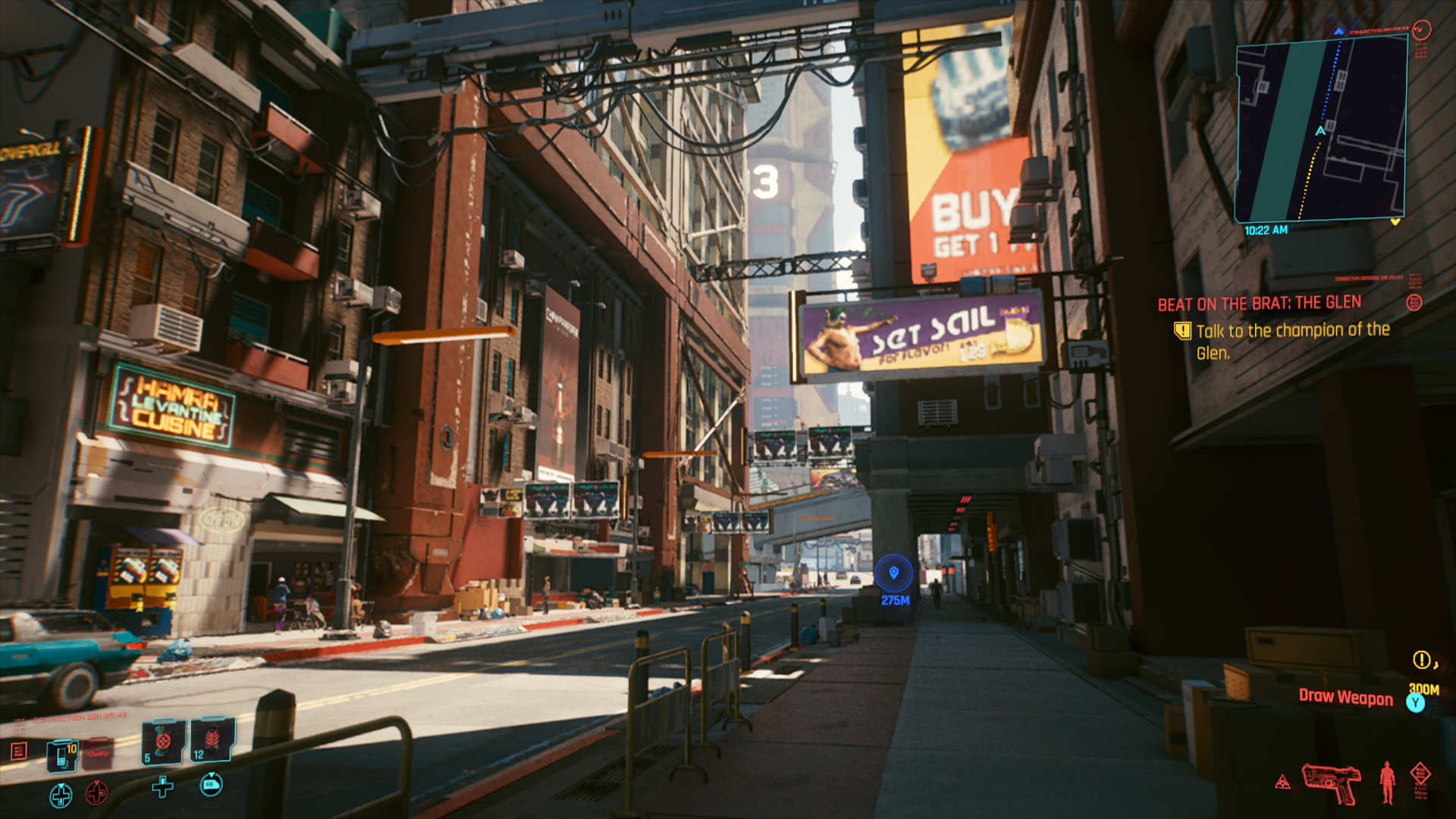Overview
I won’t be covering what Outriders is about or some of what Square Enix detailed about the game before it was launched. This review assumes you know about the overall story and concept.
Yes, there are connectivity issues with Outriders. Aside from that, it’s a decent game. Overall, it gets a 6.5/10 for me.
If you’re new here and want to know how I handle reviews but don’t want to read the full explanation, just know that everything here is my opinion, and you can take it or leave it—though I think that you’ll agree with the overall score. I am playing on an Xbox One.
As of this writing, crossplay between PC and Console versions of the game has been disabled due to stability issues with the servers. Developer People Can Fly is aware of the situation and asks that you judge the game based on its own merits and not server issues that they don’t control. I tend to agree with them and won’t be including server issues in my review—though if I did, it would be a 3/10 and would lower the overall score to 6/10.
Initial Thoughts
There are a lot of loading screens in Outriders—more than in any other game that I’ve played in several years. There’s nothing particularly wrong with that; it’s just that it’s noticeable given the lack of loading screens in other games. This is likely less of an issue on current-gen consoles, but if you have grown to hate loading screens, you may not appreciate their use in Outriders.
The Unreal engine aesthetic is getting old. Everything feels the same—as if it’s all based on Fortnite. However, the engine itself is as solid as ever. The voice acting is polished and pleasing. The story concept is decent, but the writing is “meh.” There were a couple of scenes where there was an attempt at humor, but the groundwork wasn’t done to make it feel natural, so it felt forced. Sound design is good—it wouldn’t surprise me to learn that People Can Fly recorded sounds specifically for the game. There’s nothing obtrusive about it like I experienced in Cyberpunk.
Outriders is clearly made by the studio that made Gears of War. That’s obvious, but I mention it because you’ll have opinions on design choices based on how you feel about Gears. I really like the RPG elements of the game. I find myself really looking forward to climbing the skill tree and seeing what kind of character build I end up with.
Combat – 8/10
The combat is solid. It’s fast-paced, balanced, and fun. The different class abilities make for an interesting game. That being said, you’re probably going to want to handle the arenas with some friends.
Combat difficulty in Outriders scales with your “world-tier” or experience as well as your party size. Enemies will increase in level with you and provide a consistent challenge—irrespective of where you go or how many team members you have.
I’ve been playing as a Pyromancer—the “medium-range” build—and I’ve run across situations where I would have wanted support. The enemies you encounter will be at varying ranges, which means you’re going to have issues if you’re playing alone—regardless of the build you choose.

Some enemies will literally run at you, forcing you to fight up-close and personal. Some will stay back and shoot at you from a distance. Others will sit at the mid-range and lob grenades or other splash damage items at you. I consider myself somewhat of an accomplished shooter, but I still found myself having some difficulty working alone.
Outriders was meant to be played as a team. It’s obvious when you really dig in and fight through different arenas. It’s also spelled out for you, as the game explains that the loot tables are better when you play together. Just make sure you have a balanced team, and you’ll be good.
World Building – 8/10
The world building in Outriders is very well done. The developers obviously took the time to ensure that you get a rich and deep understanding of the world that you are playing in. There are even little lore tidbits on the many loading screens that give you some background.
Additionally, there are little journal entries that can be found along the way that give you more information about certain areas, people, or circumstances that help fill-out the world. The artwork and environments also help out in this regard.
You really get a sense of what’s at stake and the emotional tone of the story just by looking at the artwork and people around you. It’s something that few games take advantage of, and I found it to be notable.
The dialogue of the NPCs changes based on your exploits, which I found to help enrich the experience. As you walk around base camp, you’ll overhear conversations about current events. Take out a gang, and the NPCs will start talking about getting their stuff back. These little details make you feel like you’re progressing and help give you a reason to do side quests.
Controls and Mechanics – 5.5/10
I have to admit that I’m not a huge fan of Gears of War or third-person shooters. I try not to let that taint my opinion of them, but you should know that information up front. That being said, there are pluses and minuses to the way that Outriders works.
The default controls are a little too sensitive for my liking. Obviously, that can easily be adjusted and it didn’t factor into the score, but you may want to know that before you play. The cover system is handy. Your character will automatically run from cover to cover to ensure that you have a fighting chance to take down your enemies.

However, I find that this system tends to fight against me. This isn’t specific to Outriders, but I don’t like the “stickiness” of the automatic cover system. I have a hard time getting out of it and end up jumping over something that I don’t want to jump over or getting into cover when the enemy is off to the side of me, turning me into hamburger meat.
That being said, it works well enough most of the time and the mechanics make sense. I can’t think of a different way to handle combat in Outriders.
Using special abilities is largely intuitive and even when you select the wrong one, you’re still going to be doing damage. Still, if you’re hoping for a splash ability and hit a targeted one, you’re going to kick yourself.
I wish I could use grenades.
Inventory – 4.5/10
The inventory system isn’t intuitive. Like, at all. Unlike other games, you won’t find an obvious list of items that you have. Instead, you’ll need to select an inventory slot—like your chest armor, for example—which will then give you a list of the items in your inventory. I happened to stumble upon this after buying some armor and trying to figure out where it went.
At first, I felt ripped off because I spent all of my money, and I couldn’t find this damn cloak. Then, I figured I’d look at the inventory slot where it should be. Don’t ask me why I did this because no items were showing up on my character, and there was no reason to think that clicking the chest piece would do anything. Still, I did it and found my cloak.
I hate it. I want to see all of the items that I have, broken down by the usual categories—firearms, armor, special, etc. While I haven’t counted, I think that you end up having more room in your inventory with the way that Outriders works. The interface is awful, though.
Graphics – 7.5/10
The graphics are good. There is a lot of detail in Outriders. Tons of little items are lying around and there seems to be an endless amount of detail to the smallest of objects. It all works to give you a sense of the emotions of the scene.
The only draw-back is that it feels derivative. It both looks like and doesn’t look like Fortnite. This is largely a personal preference, and didn’t really affect the score, but I hope this isn’t a trend for games that use Unreal Engine.
I didn’t run across many graphical issues—at least not during gameplay. There were a few minor problems during cutscenes, but it was nothing like what we saw with Marvel’s Avengers or Cyberpunk, for example. As much as I don’t appreciate the obvious aesthetic, Unreal Engine is as solid as ever.
I will say this—given the state of games that we’ve seen recently, I might be biased toward a game that actually works. You might feel the same.

Economy – 7.5/10
The in-game economy feels good. Items and weapons are expensive, but when you think about the situation, everything feels fair.
You aren’t going to have an easy time getting the “resources” (as far as I can tell, the in-game currency is called “resources”) that you need to buy things. That seems to be by design. Given the context, it makes sense that getting money would be hard. Of course, it is a lot easier to gather “resources” if you’re playing on a team—once again reinforcing the idea that you should be playing Outriders with friends.
The vendors have weapons and armor that will benefit you, which means you’ll be spending a lot of time trading and customizing your loadout. As far as I can tell, everything is designed to be in balance, regardless of your level.
That is to say, you’ll always have gear that’s good enough to take down your enemies and keep you protected, but not so good that you can just walk your way to the objective. You’ll be locked out of gear depending on your world-tier, for example, and you’ll have a reason to keep playing for the same reason.
Gameplay 4.5/10
Things will continue to get better, but there are some coding issues. The first side-quest that I did allowed me to re-do it, even though the quest giver was dead.
I also wish that there were a way to pause the game. There isn’t. If you’re going to play Outriders, you better make sure that you have dedicated your time to playing. This issue is compounded by the fact that it encourages you to play with others. All of you need to be sure you have the time to complete any given arena.
Even when you’re playing alone, there is no way to pause the game. It’s a choice that I think hurts playability because you have to schedule everything around it. Luckily, the arenas aren’t particularly long or difficult, so you can take the game in small chunks of roughly 20 minutes. You just can’t quit once you’re in.
Conclusion
I’d recommend playing Outriders. It’s a solid game with a lot of potential to get better over time. If you’re playing on Xbox Network, it’s also free, so how much are you really losing by trying it out? Once the connectivity issues are fixed, and people can play together, I think Outriders will develop a dedicated fan base.
I believe that—like Destiny before it—Outriders will have legs and we’ll continue to see the franchise expand and grow. It really could benefit from giving you the ability to pause the game, but I understand that there are reasons not to allow that mechanic or the difficulty involved in adding it. Still, if it can be done, it should be done.






